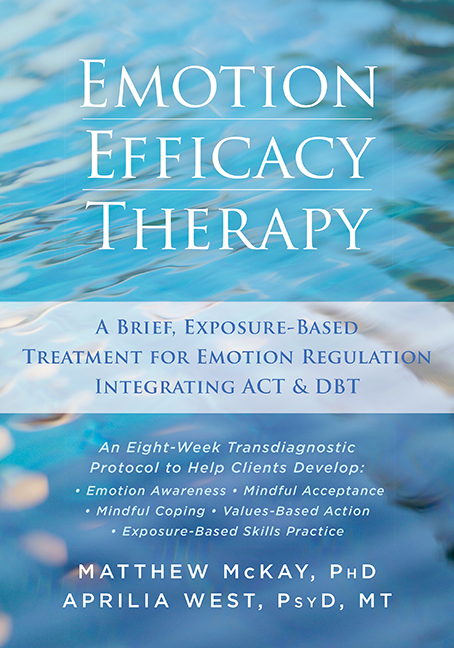Part four of a four-part series on emotion efficacy therapy
Read part one here, part two here, and part three here.
By Matthew McKay, PhD, and Aprilia West, PsyD
Mindful coping in emotion efficacy therapy (EET) is different than traditional coping in that it always follows the practice of mindful acceptance through emotion surfing at the moment of choice (read parts one and two). Mindful coping can be used in crisis situations when the client realizes, at the moment of choice, that despite “riding the wave” of their painful emotion, they are unable to choose values-based action.
There are four types of mindful coping skills in EET: relaxation and self-soothing (somatic focused); coping thoughts and radical acceptance (cognition focused); distraction (attention shifting) and time-outs.
Before you begin, have the client choose a recent distressing scene to work with, and identify a mindful coping skill they can practice using emotion exposure in session.
1. Have the client initiate emotion activation by visualizing a distressing event.
2. Once the SUDS rating (Subjective Units of Distress Scale ranging from 0-10) is in the target range (5-7), cut off the scene and lead clients through mindful acceptance through emotion surfing, observing and accepting all components of emotion.
3. After five minutes, have clients rate their SUDS.
4. Identify the moment of choice where they could act on the emotion-driven urge, or choose a values-based action.
5. Have client choose a mindful coping skill, and practice the skill for five minutes, or until the emotion wave dissipates.
6. Rate SUDS.
7. Consolidate learning by asking the client about the exposure, and highlighting the way in which the skills impact their emotional experience.
 Matthew McKay, PhD, is a professor at the Wright Institute in Berkeley, CA. He has authored and coauthored numerous books, including The Relaxation and Stress Reduction Workbook, Self-Esteem, Thoughts and Feelings, When Anger Hurts, and ACT on Life Not on Anger.
Matthew McKay, PhD, is a professor at the Wright Institute in Berkeley, CA. He has authored and coauthored numerous books, including The Relaxation and Stress Reduction Workbook, Self-Esteem, Thoughts and Feelings, When Anger Hurts, and ACT on Life Not on Anger.
Aprilia West, PsyD, MT, is a psychotherapist and emotion researcher based in the San Francisco Bay Area, where she specializes in treating anxiety disorders, mood disorders, and trauma.

 2024 Peace Playbook: 3 Tactics to Avoid Clashes with Your Partner
2024 Peace Playbook: 3 Tactics to Avoid Clashes with Your Partner